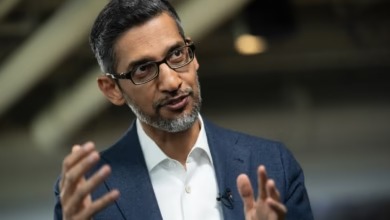Fresh Reporting Reveals Why OpenAI Really Fired Sam Altman

▼ Summary
– The firing and rehiring of OpenAI CEO Sam Altman in November was due to a breakdown of trust and a pattern of behavior, not a single incident.
– Key figures like Chief Scientist Ilya Sutskever and CTO Mira Murati expressed frustrations with Altman’s lack of transparency and potential manipulation.
– Specific issues included Altman’s failure to inform the board about significant developments and pushing forward with model enhancements without adequate safety reviews.
– Internal tensions, particularly with Sutskever, had been brewing for years, and Murati’s role in the firing was complex, as she did not anticipate the board’s decision.
– Altman’s exceptional fundraising ability and broader ambitions, including potential political aspirations, played a significant role in his reinstatement and the company’s stability.
The abrupt firing and subsequent rapid rehiring of OpenAI CEO Sam Altman last November remains one of Silicon Valley’s most perplexing recent dramas. While the initial shockwaves have subsided, the central question lingered: what actually prompted the board’s stunning decision? The official line – that Altman “was not consistently candid in his communications” – felt deliberately vague, leaving tech observers and insiders hungry for specifics.
Now, months later, crucial details are finally surfacing, largely thanks to the reporting of Keach Hagey at The Wall Street Journal, who recently discussed her findings, drawn from her upcoming book The Optimist, on the Hard Fork podcast with hosts Kevin Roose and Casey Newton. Hagey’s work begins to fill in the gaps of what OpenAI employees reportedly now call “The Blip.”
Beyond ‘Not Consistently Candid’
The podcast discussion, illuminated by Hagey’s reporting based on extensive interviews (over 250 for the book), paints a picture far more complex than the initial public statements suggested. It wasn’t a single transgression, but rather a pattern of behavior and a breakdown of trust between Altman and key figures, including members of his own leadership team and the non-profit board tasked with overseeing the company’s mission.
According to Hagey’s findings discussed on Hard Fork, top lieutenants, notably Chief Scientist Ilya Sutskever and CTO Mira Murati, had grown increasingly frustrated with Altman. They presented concerns to the board, backed by evidence that reportedly included screenshots of Slack messages provided by Murati herself.
Specific instances cited contributing to the board’s loss of confidence included:
- Lack of Transparency: Altman allegedly failed to inform the board about significant developments, such as the planned launch of ChatGPT or his personal ownership of the separate OpenAI Startup Fund, which the board believed it controlled.
- Potential Manipulation: Hagey’s reporting suggests instances where Altman may have attempted to play board members against each other or presented misleading information.
- Circumventing Process: There were concerns that Altman’s team was pushing forward with enhancements to models like GPT-4 without adequate safety reviews by a joint committee established with Microsoft.

The Internal Rift
The reporting highlights a deep-seated tension, particularly with Ilya Sutskever. Far from a sudden disagreement, Sutskever, a co-founder and respected AI researcher, had apparently harbored concerns about Altman’s leadership style and alleged manipulative tactics for years, dating back to internal power struggles over research direction in 2021. Hagey suggested Sutskever felt Altman consistently sidestepped accountability for actions that deviated from agreements, framing them as simple oversights or “oopsie moments.” He was reportedly waiting for a moment when the board composition shifted away from being unequivocally stacked in Altman’s favor.
Mira Murati’s role appears particularly complex. While she provided documentation detailing her frustrations, Hagey indicated Murati might not have anticipated the board’s ultimate decision to fire Altman. Her expectation, perhaps, was for intervention or coaching, not outright dismissal. This potential misunderstanding underscores the communication breakdown that occurred. When the company began to fracture in the days following the firing, with hundreds of employees threatening to resign and potentially move to Microsoft, Murati’s position shifted, becoming instrumental in the effort to reinstate Altman.
Ambition, Fundraising, and the Aftermath
Underlying the drama is Altman’s unique position and skillset. Hagey describes him as an unparalleled fundraiser – his “superpower.” This ability was critical, especially demonstrated by the near-$90 billion valuation achieved through a tender offer negotiated shortly before the firing (a massive jump from $30 billion). This financial reality likely played a significant role in employee loyalty; their potential millions were tied to the company’s stability under Altman.
Hagey also touches on Altman’s broader ambitions, citing sources who believe he aspires to be a “great man of history,” potentially even eyeing political office someday. This drive, combined with his fundraising prowess, creates a figure who is both essential to OpenAI’s financial success and, according to some colleagues cited in the reporting, challenging to manage and trust fully.
While Hagey’s reporting provides much-needed context, the full story of “The Blip” remains intricate. The events severely tested OpenAI’s unusual governance structure and its crucial partnership with Microsoft, which was reportedly blindsided by the board’s initial move but played a key role in the resolution. Although Altman is firmly back in charge, the episode exposed fault lines within one of the world’s most important AI companies, reminding everyone how personality, power, and vast sums of money continue to shape the future of artificial intelligence.
(Disclosure: Hard Fork host Kevin Roose is a columnist for The New York Times, which is suing OpenAI and Microsoft for alleged copyright infringement. Host Casey Newton’s partner works at Anthropic, an OpenAI competitor. Keach Hagey is a reporter for The Wall Street Journal.)






